7 Unexpected Dangers to Avoid at the Gym
Don't let any of these machines or moves take you down.
By Corrie Pikul
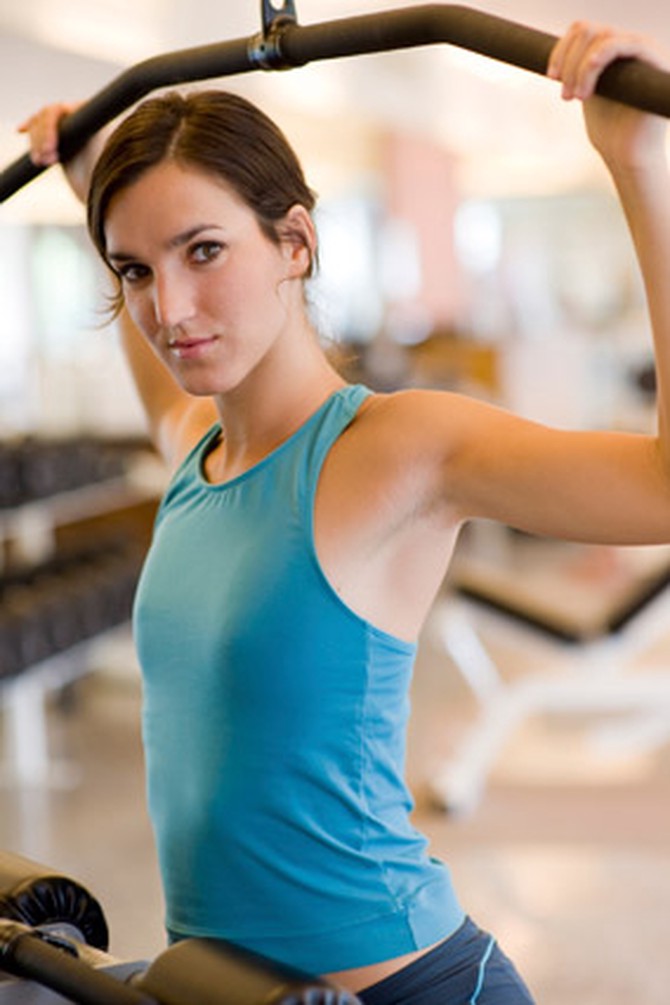
Photo: Thinkstock
Backward Lat Pulldowns
The instruction panel on this machine may show a seated figure pulling the bar down behind his head and neck. Ignore it. As almost all trainers will tell you, pulling behind the head requires the shoulder flexibility of a Cirque du Soleil performer. Those of us who spend our days hunched over keyboards risk injuring our stiff shoulders and tearing our rotator cuffs by following those outdated directions.
Be safe: Effectively strengthen your lats by pulling the weighted bar in front of your face and down to your collarbone, says Jessica Matthews, an exercise physiologist for the American Council on Exercise. Same machine, different move, better results.
Be safe: Effectively strengthen your lats by pulling the weighted bar in front of your face and down to your collarbone, says Jessica Matthews, an exercise physiologist for the American Council on Exercise. Same machine, different move, better results.
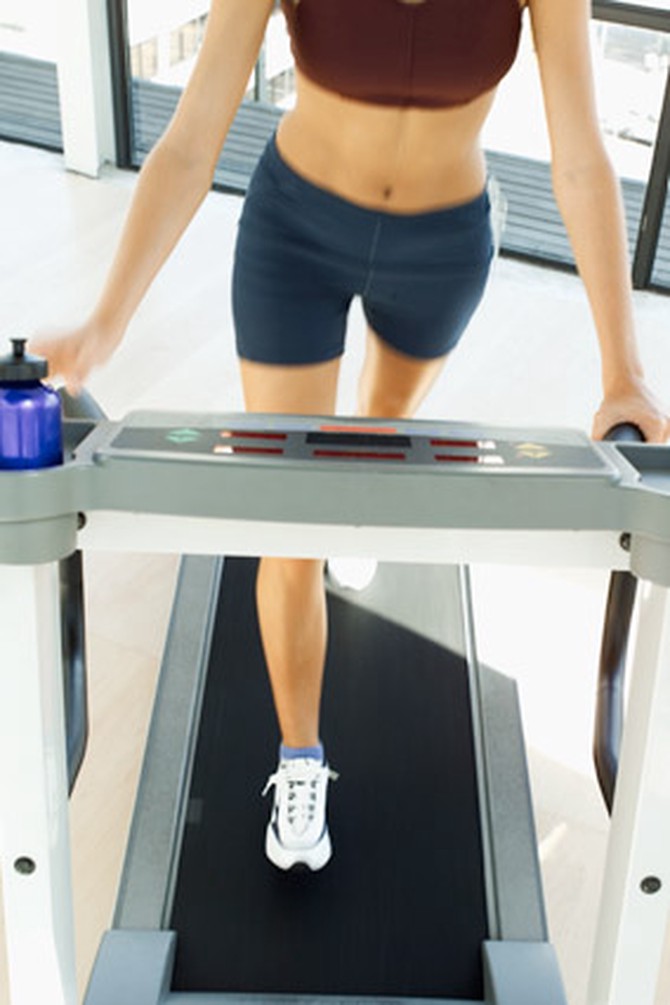
Photo: Thinkstock
The Mount Everest Treadmill Incline
You've probably heard that you can get a better workout on the treadmill by increasing the incline. True, says Rick Morris, a Colorado running coach who wrote the book Treadmill Training for Runners, but he adds that many people attempt to sprint up steeper hills on the treadmill than they would consider tackling outdoors. Pitching the incline too steep for your fitness level can put excess stress on your back, hips and ankles as you lean far forward. Morris says if you typically run 3 to 10 miles three or more times per week, you should stay below 8 percent; new runners or those who train on flat terrain should stick to a 5 percent incline, max.
Be safe: This basic ladder workout from Morris' book will take you gradually up to a moderate incline. After your warm-up, run for two minutes at a 1 percent incline. Then increase the incline to 2 percent, and run for 45 seconds. For each interval, increase the incline by one percentage point and decrease the sprint by 10 seconds, so you'll run 35 seconds at a 3 percent incline, 25 seconds at 4 percent and 15 seconds at 5 percent. That's the top; now work your way back down to 1 percent. Jog one minute and repeat.
Be safe: This basic ladder workout from Morris' book will take you gradually up to a moderate incline. After your warm-up, run for two minutes at a 1 percent incline. Then increase the incline to 2 percent, and run for 45 seconds. For each interval, increase the incline by one percentage point and decrease the sprint by 10 seconds, so you'll run 35 seconds at a 3 percent incline, 25 seconds at 4 percent and 15 seconds at 5 percent. That's the top; now work your way back down to 1 percent. Jog one minute and repeat.
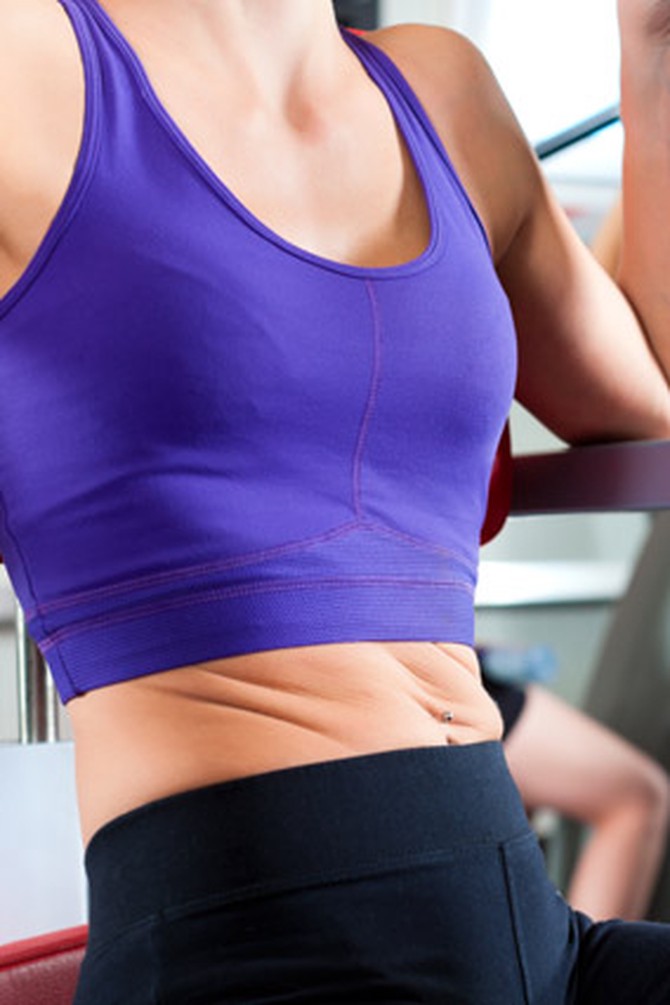
Photo: Thinkstock
The Seated Torso Rotation Over-Twist
This machine is designed to shape the obliques and eliminate love handles, making it popular with gym-goers looking to whittle their waists. However, it requires you to lift a stack of weights by twisting only your upper body and keeping your pelvis facing forward (try it in your chair; awkward, isn't it?). Isolating the back in this way puts an excessive amount of rotational force on the spine. Over time, it can result in a disk-related injury, says Matthews. Some devotees of this machine have found themselves hobbling to the chiropractor with nerve damage that causes shooting pain in the legs.
Be safe: Protect your spine and work your obliques with wood chops, says Matthews. Stand facing forward with your left foot slightly in front, and hold a medicine ball at hip height with both hands. Rotate your torso to the left as you straighten your arms to bring the medicine ball up over your left shoulder. Now bring it down diagonally across your body to the outside of your right hip (you'll feel it in your core). Repeat on the opposite side with the right leg forward.
Be safe: Protect your spine and work your obliques with wood chops, says Matthews. Stand facing forward with your left foot slightly in front, and hold a medicine ball at hip height with both hands. Rotate your torso to the left as you straighten your arms to bring the medicine ball up over your left shoulder. Now bring it down diagonally across your body to the outside of your right hip (you'll feel it in your core). Repeat on the opposite side with the right leg forward.
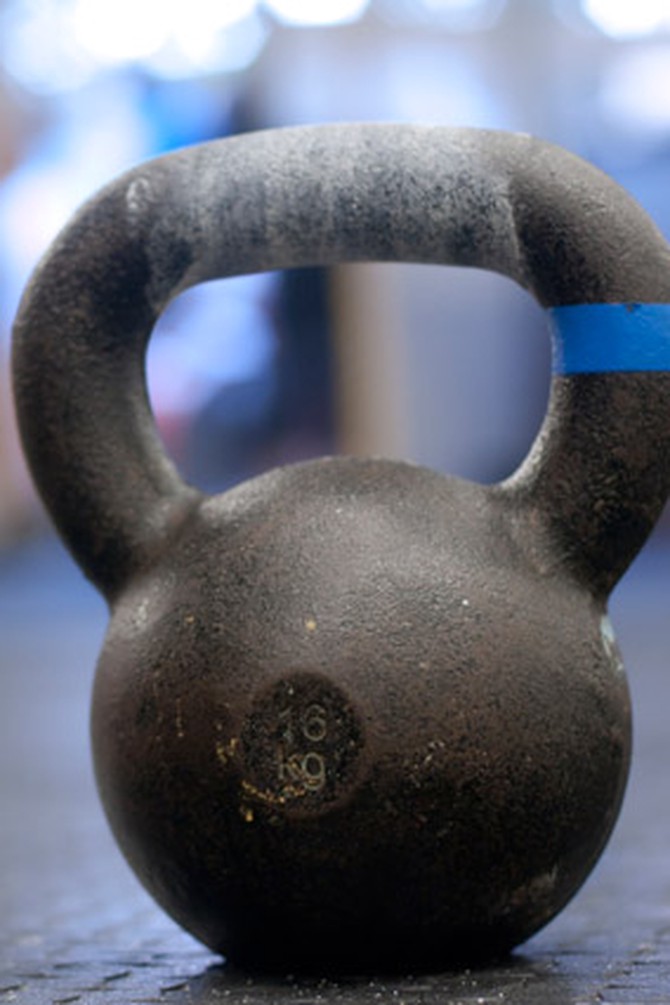
Photo: Thinkstock
Out-of-Control Kettlebells
Kettlebells—those cast-iron weights that look like cannonballs with handles—are meant to be swung with momentum, not slowly lifted against gravity. Because kettlebell training involves such powerful movements, Matthews says that people often get carried away and lose control of their form—or of their weight (she's heard of a gym-goer accidentally swinging a kettlebell into another person's back). Strains are another problem. She says that one of the trickiest kettlebell exercises to do correctly is the single-arm swing, which is a combination of a squat and an arm swing. Matthews sees people putting too much of their upper body into the lift, which can lead to shoulder and back strains, as well as torn rotator cuffs.
Be safe: Hold an 8- to 15-pound kettlebell in one hand. Brace your core, squat down with your weight on your heels, and push upward from the legs as you stand and swing your arm up. This isn't a shoulder exercise; it targets the glutes and quads, so the movement should generate from your hips. "The arms should be providing stability, not momentum," says Matthews.
Be safe: Hold an 8- to 15-pound kettlebell in one hand. Brace your core, squat down with your weight on your heels, and push upward from the legs as you stand and swing your arm up. This isn't a shoulder exercise; it targets the glutes and quads, so the movement should generate from your hips. "The arms should be providing stability, not momentum," says Matthews.
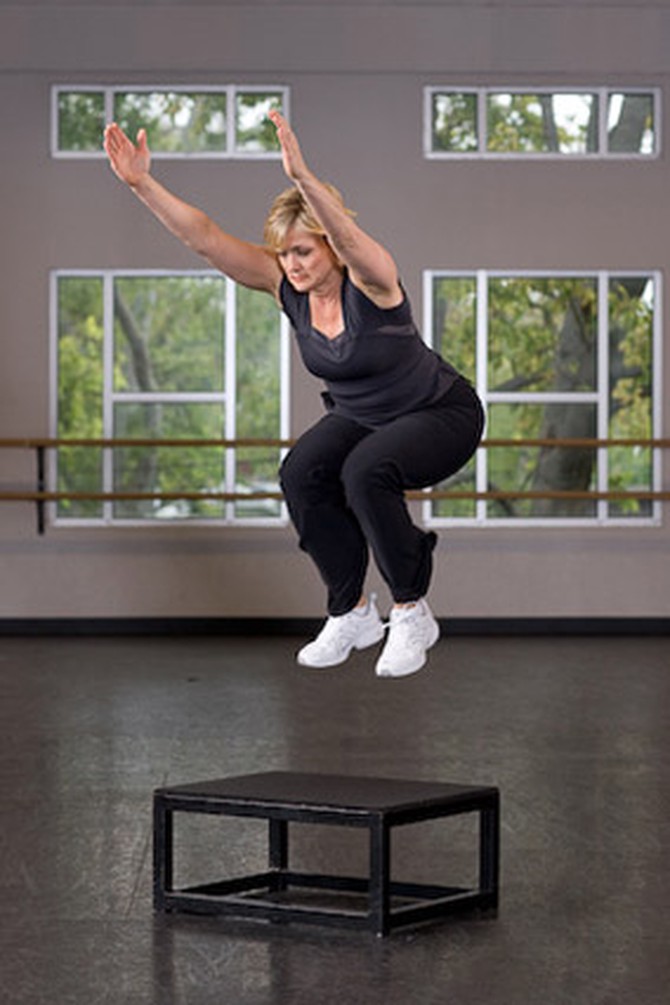
Photo: Thinkstock
Rough Landings from Jumps
Depth jumps off an exercise step or platform are great for conditioning, says Matthews, as long as you know how to land. After you take off and leap into the air, you're coming back to earth with a lot of force. If the majority of it lands on the ball of your foot, it's difficult for your body to disperse the weight, and you may drive the knee forward, resulting in knee pain. If you land on your heels, you'll stress the lower back.
Be safe: To better absorb impact, Matthews advises landing on your mid-foot, under your arch. This helps disperse force and generate power for your next move. If you do it correctly, you should feel ready to roll forward, push off from the ball of your foot and jump up in the air again.
Be safe: To better absorb impact, Matthews advises landing on your mid-foot, under your arch. This helps disperse force and generate power for your next move. If you do it correctly, you should feel ready to roll forward, push off from the ball of your foot and jump up in the air again.
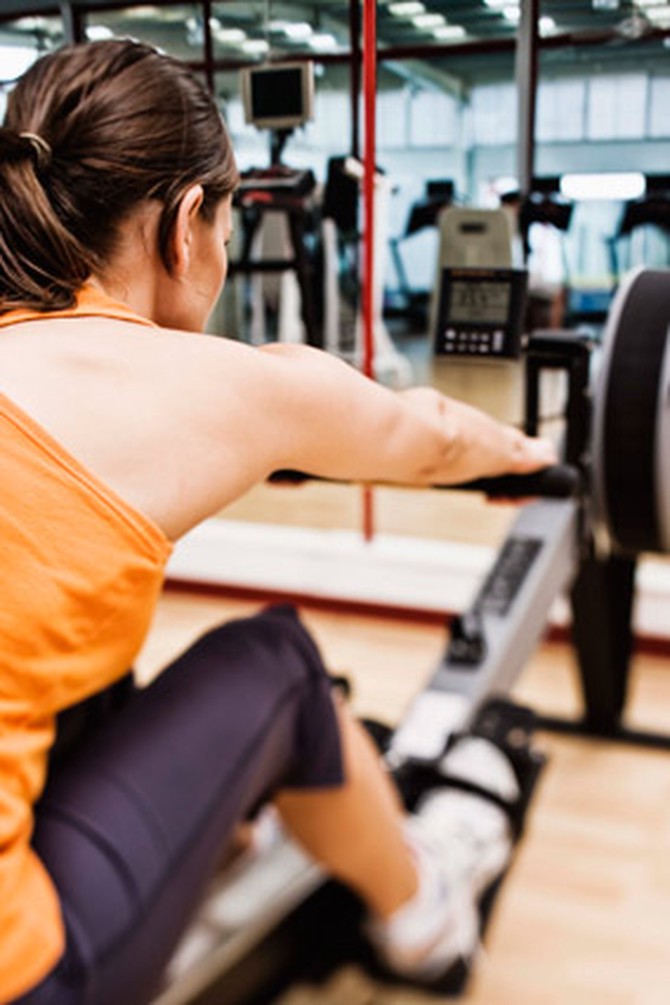
Photo: Thinkstock
Arms-Only Rowing
Rounded shoulders, hunched back, pulling as hard as possible: This is how most people think they should use the rowing machine, and it makes trained rowers cringe. "I always see people using this machine as an arms-and-back workout," says Esther Lofgren, current World Champion rower who is training for a spot on the U.S. Olympic Team. "They usually conk out a minute or so later." It's a blessing that these amateur rowers don't last long, because, as Matthews says, misusing the machine this way puts a lot of force on back and spine muscles, which can lead to herniated disks.
Be safe: Push back with power from the legs, and let the arms and back follow. Instead of hunching your shoulders up to your ears, keep a long neck and straight back throughout the stroke. If you feel any pain in your back, lighten the resistance.
Be safe: Push back with power from the legs, and let the arms and back follow. Instead of hunching your shoulders up to your ears, keep a long neck and straight back throughout the stroke. If you feel any pain in your back, lighten the resistance.

Photo: Thinkstock
Quad-Bulking Leg Extensions
This machine is found in every gym, says Matthews, despite the fact that it isn't that useful. You've heard it before, but it bears repeating: Unless you're using this under the supervision of a physical therapist (to recover from runner's knee, for example), it's a waste of your time. The weight is placed uncomfortably near the ankle, where it can put a high amount of torque on the knee joints when you lower it, says Matthews. Some people cause even more problems by starting with their feet tucked way under their seat. This exercise bulks up your quads, but women tend to have stronger quads than hamstrings, so unless you're doing a separate exercises for the back of the legs, you risk muscle imbalance and future strains.
Be safe: Matthews suggests sticking with basic squats, which work the front and back of the legs and can be done anywhere, anytime, without machinery.
Next: 10 common workout mistakes to avoid
Be safe: Matthews suggests sticking with basic squats, which work the front and back of the legs and can be done anywhere, anytime, without machinery.
Next: 10 common workout mistakes to avoid
Published 02/08/2012

